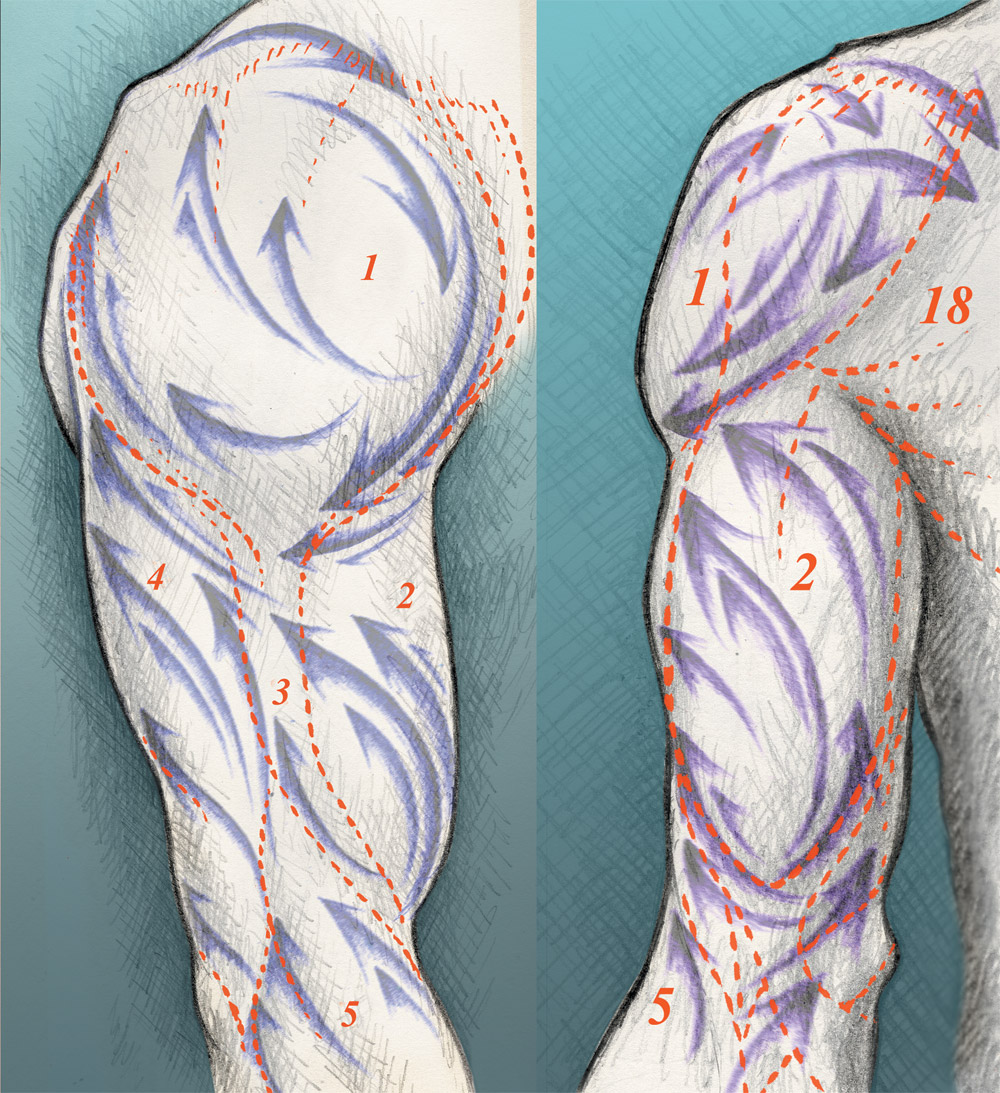A Tattooist's Guide to the Major Muscle Groups
A basic familiarity of the body's larger muscles can be helpful in laying out a design. If some of the larger curves or shapes in the tattoo design coincide with the form of the muscles, it will produce a naturally better fit and will animate more naturally as the body part moves. I recommend that you invest in at least one good anatomy reference book, such as Jeno Barclay's "Anatomy For The Artist" (Barnes & Noble, 1995). Although it is not necessary to memorize all the different muscles by name, having a general knowledge of their structure and movement can give you an advantage as a tattoo artist.

forearm2view.jpg)
Part I: The Arm Muscles
- Deltoid: The large triangular muscle at the top of the shoulder. A tattoo occupying this space is often referred to as a "shoulder cap". It's ideal for a mid-sized tattoo that needs to hide under a T-shirt.
- Biceps Brachii: The major muscle bulge on the front of the arm. Any half sleeve design needs to take the form of this muscle into account and take advantage of the curve in the front of the arm.
- Brachialis: Another large frontal arm muscle, mostly covered by the biceps. This muscle is generally only visible on toned people.
- Triceps: This large rear arm muscle extends from the armpit to the elbow and has a fairly prominent horseshoe-shaped bulge that can be used effectively in a tattoo design. From a side view, this bulge slants up and back diagonally toward the shoulder blade.
- Brachioradalis: The largest upper forearm muscle that extends into the lower part of the upper arm. This muscle defines the top of the forearm part of a sleeve design, and continues in the upward- and-rear diagonal movement that the bulge in the triceps follows.
- Extensor Digitorium: This muscle extends from the top of the forearm, then divides and connects to the four fingers. It forms a large part of the bulge of the outer forearm.
- Anconeus: A continuation of the outer part of the triceps, this muscle, when visually combined with the extensor digitorium, follows the same diagonal movement as the brachioradalis.
- Flexor Carpi Ulnaris: This long muscle extends from the elbow to the wrist and points straight toward the hand.
- Palmaris Longus: This muscle and its neighbor, the flexor carpi radalis, run straight up the arm from the wrist and curve toward the inner elbow near the top of the forearm. These muscles form a V-shape that frames off the "ditch" of the inner elbow.
- Abductor Pollicis Longus: This small muscle creates that distinct widening in the wrist just above the heel of the thumb.
Join the discussion in the forum.